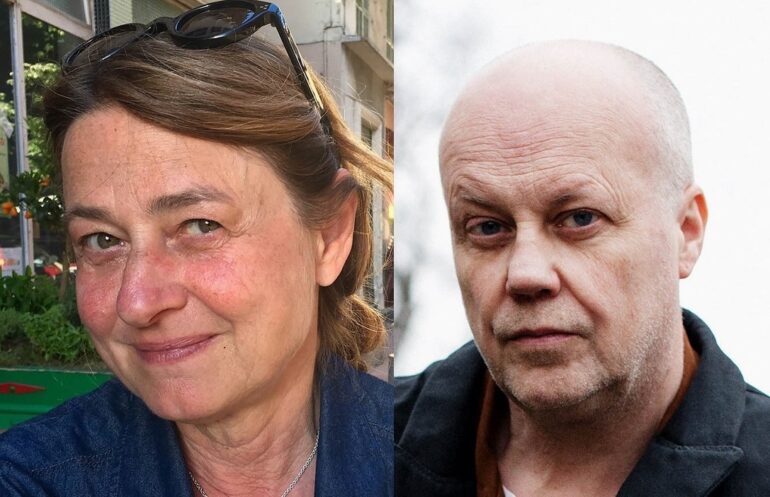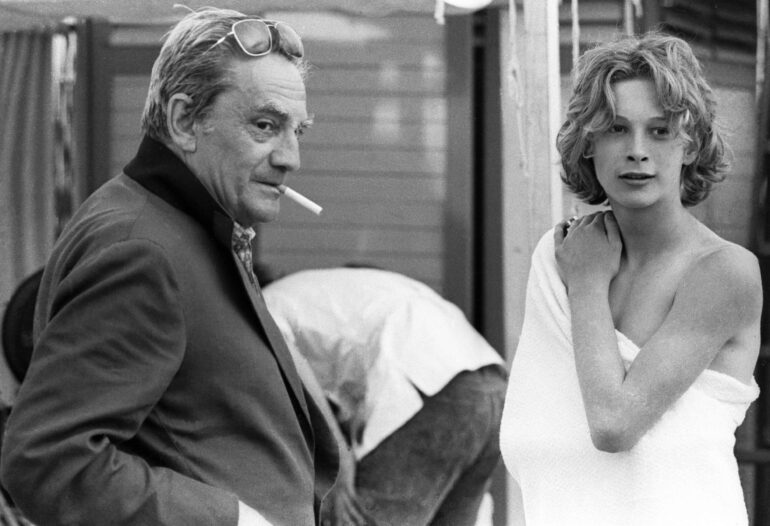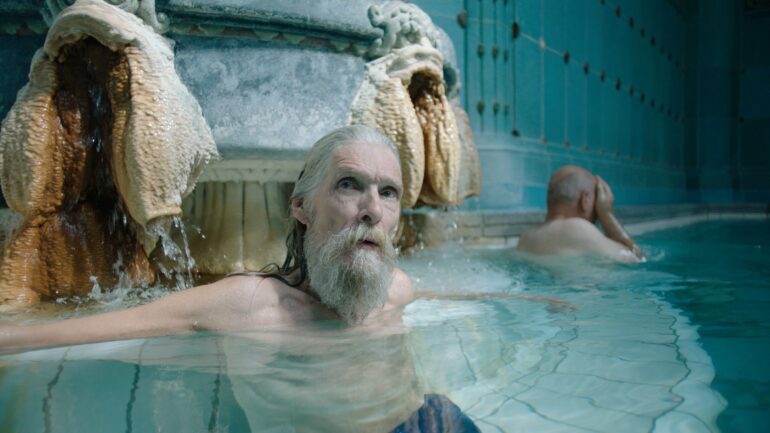WRITTEN BY: Annika Pham
Sundance: The Swedish documentary is being showcased in the World Cinema Competition section. TriArt will release it domestically later this year.
Seasoned directors Kristina Lindström and Kristian Petri have collaborated earlier on the musical documentaries The Era-Punk in three Parts (2017) and Silence (2020).
Separately, they have collected wide acclaim for their works - Lindström with Palme (co-directed in 2012 with Maud Nycander) and Petri with Between Summers (1995), Details (2003), Tokyo Noise (2002) among others. He has also directed several premium TV dramas such as Before We Die.
In The Most Beautiful Boy the World the co-directors follow the 60+ year-old actor/musician Björn Endresen, as he tries to deal with his demons, including the cursed image of beauty that he inherited from Italian master Luchino Visconti who cast him in his 1971 classic Death in Venice and declared him ‘the most beautiful boy in the world’.
Thrown against his will onto the limelight aged 15 we see through remarkable archive material, a fragile young boy travelling from Venice to Cannes, Paris, and Japan where he becomes the first Western pop idol. The ageing Endresen gradually guides the co-directors on his journey, from self-exploration to self-acceptance, as he comes to terms with his mother’s death and legacy.
The film was produced by Stina Gardell of Sweden’s Mantaray Film, in coproduction with SVT, ZDF/ARTE, in collaboration with YLE, and support from Nordisk Film & TV Fond, the Swedish Film Institute, Creative Europe, Film Invest Örebro and Jonas Gardell Produktion.
Films Boutique handles world sales. Juno Films will release the film in May in the US and TriArt later this year in Sweden.
How did you first have the idea for the film?
Kristina Lindström: Kristian and Björn have known each other for about 30 years!
Kristian Petri: Stockholm is quite small, and we move around in the same circles of writers, actors etc. Then I worked with him on a children's series, The Book of Worlds, commissioned by SVT. We had a great time, and talked a lot during the breaks. At that time, I knew of his story, as ‘the most beautiful boy' for Visconti in Death in Venice. And I also knew he wasn’t keen to talk about it. Then later in life, we met with Kristina all together at a dinner party.
KL: I asked him about his background, why he was raised by his grandmother etc. He opened up a bit, and I said…oh this would be an amazing documentary! But he was against the idea. He hated that dark moment in his life. Then we met on several other occasions, talked and talked with him until he said YES!
How long was the shooting period?
KL: We’ve filmed Björn over five years. It’s not like we started immediately. It’s been a process of revealing different parts of his life, only when he wanted to do it. It was like going to an old house, and opening doors to new rooms.
KP: We were just grateful over the five years, to be invited to film him. It was like ‘Let the right one in!’ It took us actually two years before he let us come to his flat. That would be the most natural place to film him, but no…he waited! When we did, he was more at ease, then he insisted on us meeting his daughter. So the filming was full of layers, like the final movie.
It seems like once on board, Björn was 100% committed as you had access to very personal memories and home movies from his childhood and his mother…
KL: Yes Björn’s sister gave us a lot of materials -tapes, photographs. Björn also had boxes with super 8 film in his cellar that had been rescued from water damage. We travelled, we did a lot of things together, filming all the time. He felt trust in this process.
KP: We became part of his extended family and were there at odd moments, in the scene where the landlord threatens to expel him from his flat or when he quarrels with his girlfriend on the phone.
In all occasions, Björn was totally at ease with the camera. He knows where it is and has total control. He is a dream for documentary filmmakers.
How do you - Kristian and Kristina - work together and how do you complement each other?
KL: We discuss ideas all the time. We have different backgrounds and do complement each other. My background is as a filmmaker, a journalist.
KP: I make both documentaries and fiction films and TV series. Perhaps I look at a project from a different cinematic perspective. As documentary filmmaking is a long process, we shared the filming.
Could you expand on your cinematic vision for the film?
KP: We used a wide format, like in Death in Venice, to lift the visual style, away from the small screen, to make it a big cinema experience.
KL: we wanted to make Björn’s story as big as Death in Venice.
How did you have access to the amazing footage from Visconti’s first casting of Björn and Death in Venice behind the scenes, where we see the maestro immediately struck by Björn’s ‘absolute beauty” as he called it?
KP: We got this from Italian television. They had followed the entire process of Visconti finding the boy. Then we found the material of the press conference in Cannes 1971. No one has seen it in 50 years!! It’s incredible.
Visconti’s hurtful words about Björn during the press conference [speaking in French to the French press, Visconti made fun of the young Björn aged 15, saying he had aged since the shooting and his beauty had faded] and the way the people laughed was shocking. This would be inconceivable today. Visconti might be an iconic film director, but his behaviour was shocking.
Björn’s exploitation in the name of beauty continued in Japan, and it’s interesting to discover that he was the first western pop idol there and an inspiration for Manga creators. How was your trip back to Japan with Björn?
KL: Björn was very appreciative. He went back for the first time since he was a young boy. He did two trips and reclaimed his identity in a way. It was a huge work to find all the people who knew him then, as he was a child at the time.
KP: Everyone was alive and welcoming. They all had a strong impression of Björn as a boy, and wondered what had happened to him.
The film shifts from the exploitation of Björn’s image and beauty to his personal quest, as he digs into his childhood traumas to get to terms with who he is. The whole process must have been a cathartic experience for him. How is he now?
KL: When we started filming, he was more sombre. It was wonderful through the filming process to see him reconnect notably with his daughter.
KP: If you met Björn, you would see that he’s not gloomy or depressing. He is sociable, fun, and a great storyteller.
Could you say a few words about the score composed by Filip Layman, but also written by the celebrated Swedish musician/songwriter and pipe organist Anna von Hauswolff?
KL: I simply love her music. I asked if she was interested. She started to look at our material and created her own score. It was her first original soundtrack. She has been super loyal to Björn in her own way. .
Would you say that the film is relevant to audiences beyond the hardcore arthouse audiences, fans of Death in Venice, through its themes of image exploitation, the burden of stardom etc?
KL: Yes definitely. There are so many layers in the film. It’s really about the legacy of your past, and how this affects who you are.
KP: It is definitely for an audience that is not necessarily film-oriented.
The film is at Sundance. Perhaps your initial plan was to open the film in Venice?
KL: it’s been perfect to launch the film at Sundance, and especially in 2021 as it’s exactly 50 years since Death in Venice was released.
What’s next?
KP: We will definitely do other films. But I will also sit down and write a book.


